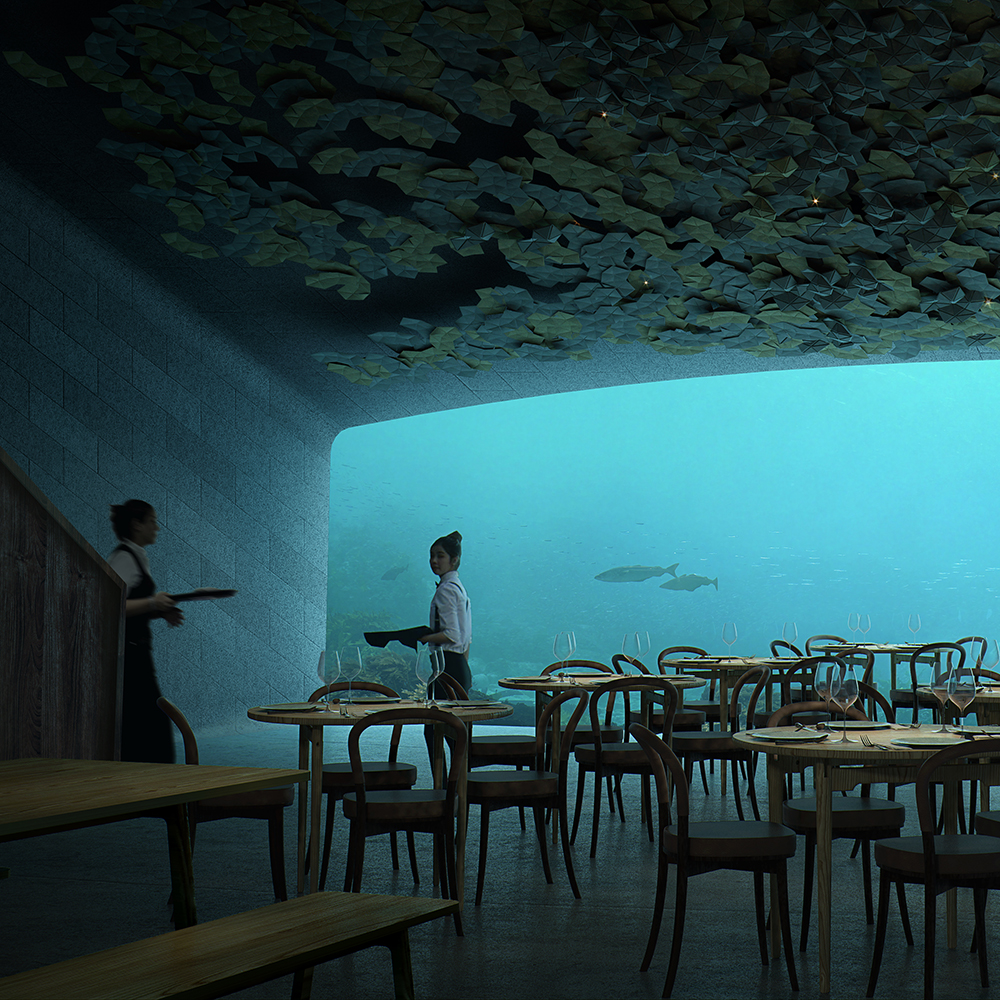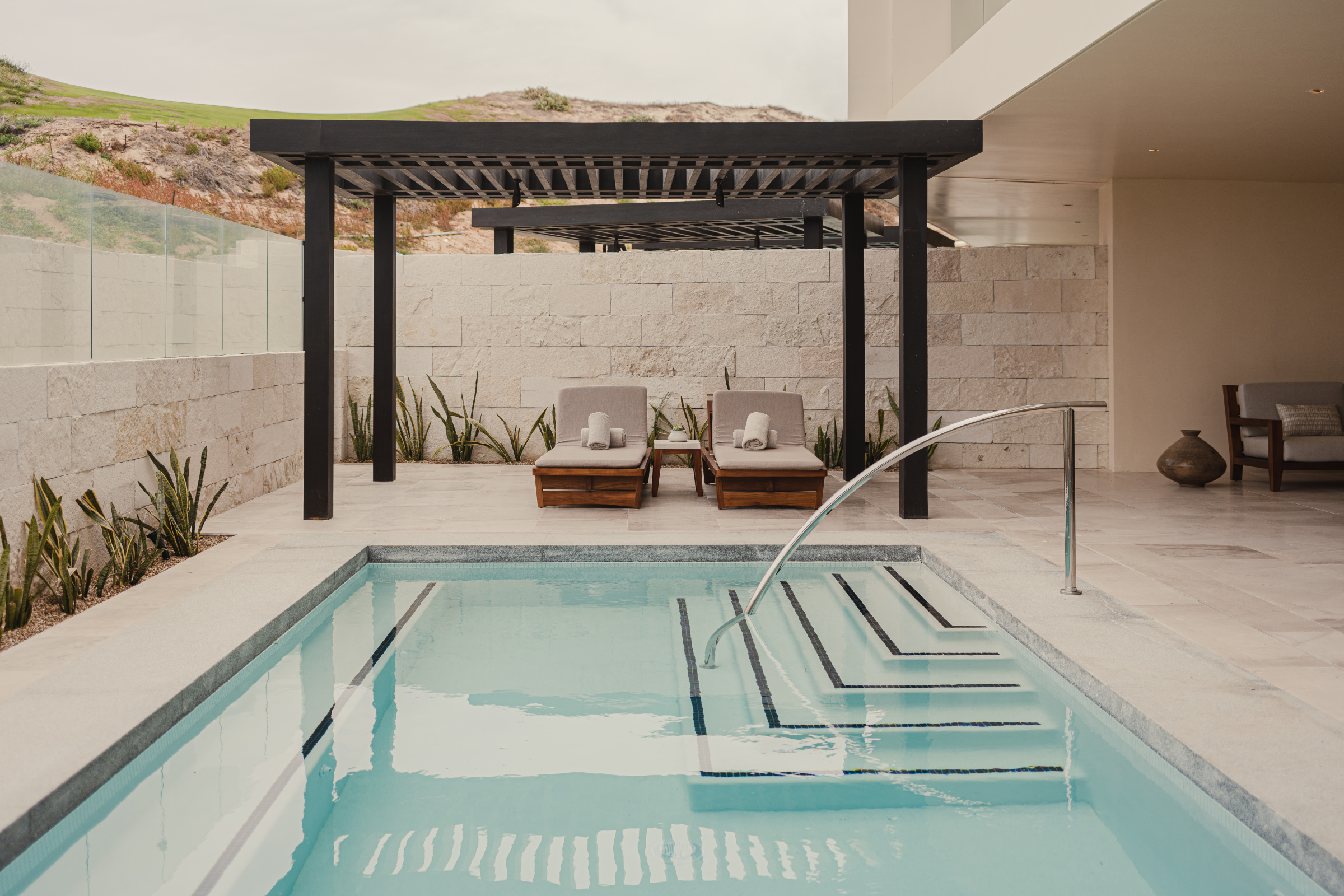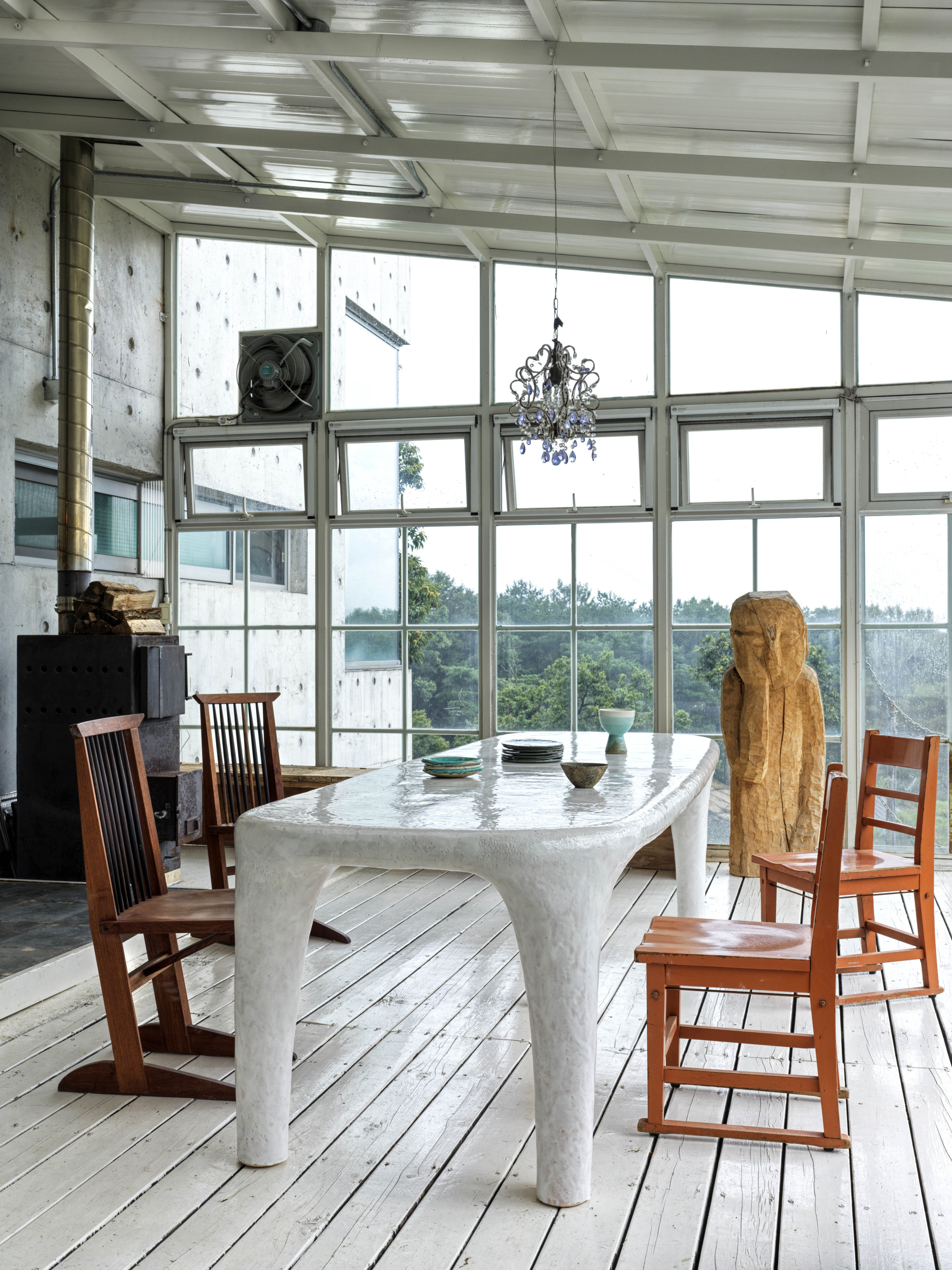Close your eyes and picture “underground.” Maybe you imagine a cave, tunnels, an elaborate city system, or just a whole lot of worms and dirt. But consider, for a moment, what else might be there—historic bunkers, ancient water reservoirs transformed into art galleries, even elaborate restaurants in the sea. The underground intrigues as it allures, calling us to explore what lies beneath or create our own subterranean wonders.
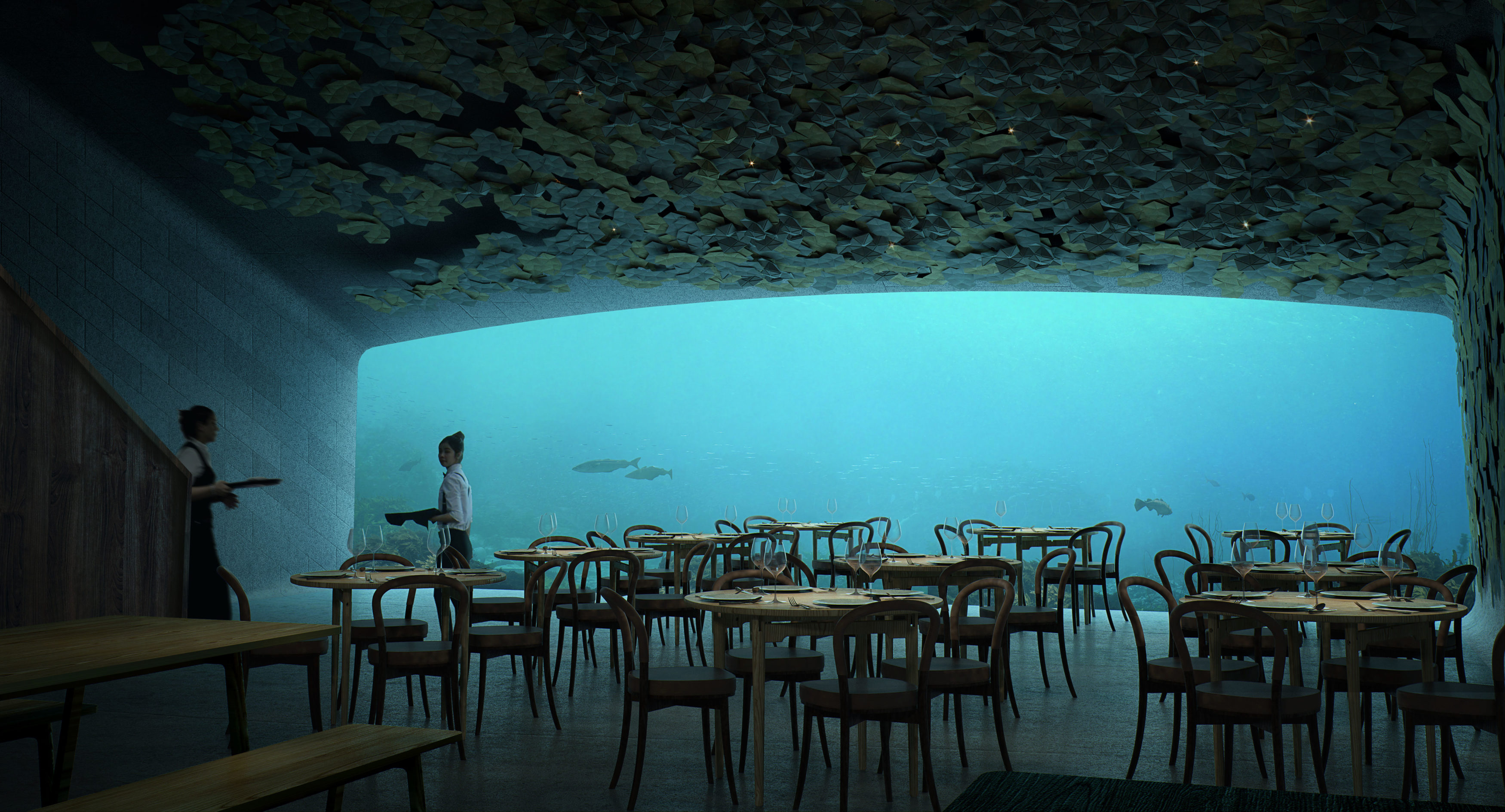
The menu, from Danish chef Nicolai Ellitsgaard Pedersen, is set to include local cod, lobster, and mussels. PHOTOGRAPHY BY MIR AND SNØHETTA.
1. Under restaurant
Lindesnes, Norway
It’s not every day you get to have dinner under the sea (unless you’re Ariel). But in 2019 you can dine in what’s being billed as Europe’s first underwater restaurant—Under. Designed by award-winning global architecture firm Snøhetta, Under will be both restaurant and research center, as the concrete structure becomes part of its environment, resting on the seabed 16 feet below the surface.
The structure itself looks like a giant, half-sunken periscope jutting out against the rocky shoreline. To get inside, visitors will travel down three levels, starting at the entrance, where the tide pool meets the sea. Patrons will walk down one level to the champagne bar and, from the bar, also see down to the seabed restaurant. In the restaurant, diners will no doubt be engrossed by marine life swimming by the large panoramic window.
Under’s design will not harm its neighbors, though. Its sleek form is surrounded by a concrete shell with a coarse surface, inviting mussels to cling on. Over time, experts expect the mollusk community will grow until the underwater structure becomes an artificial mussel reef that both rinses the sea and attracts more marine life to the purified water.
CHECK UPDATES AND EXPLORE MORE
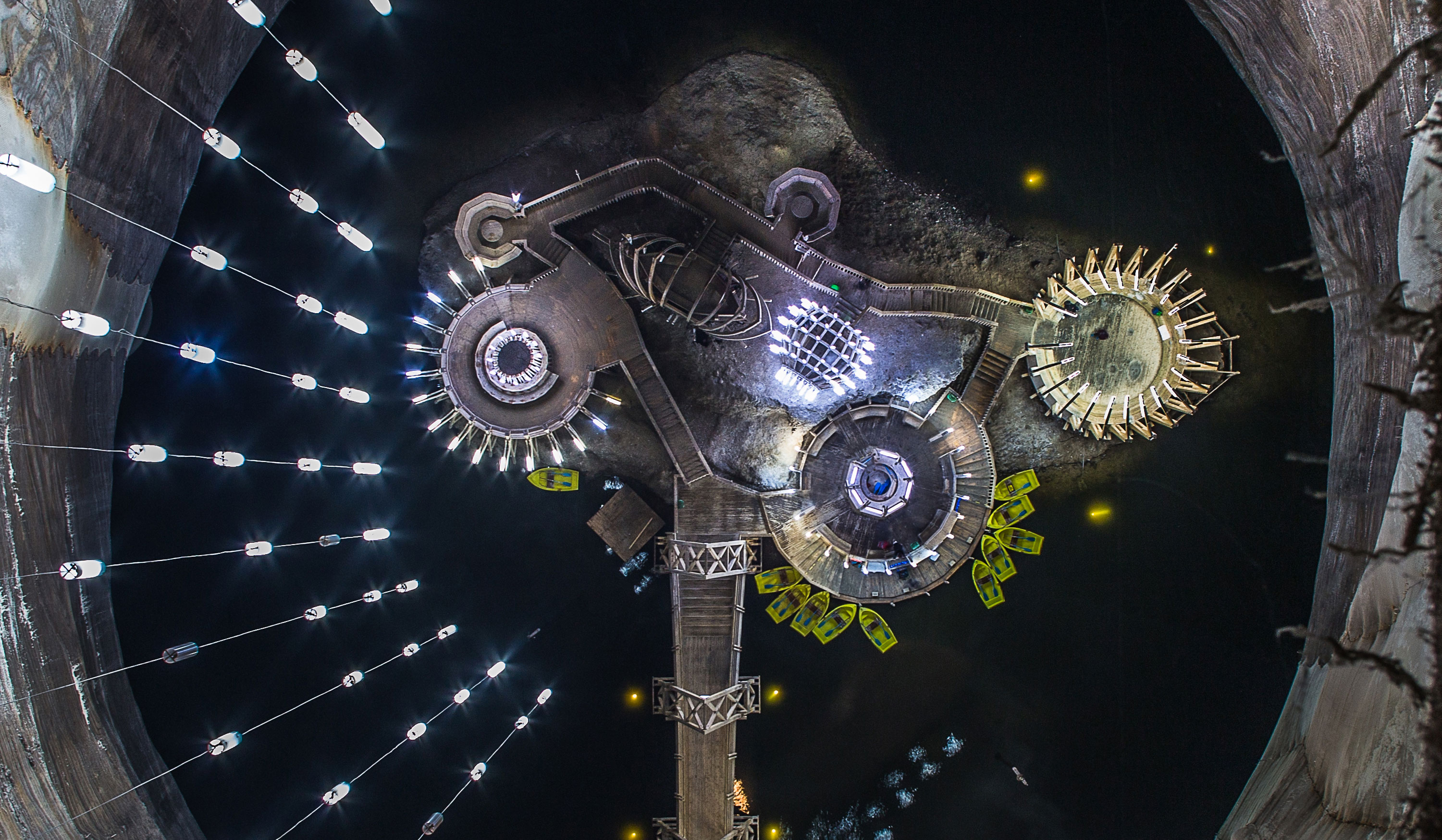
Because of its microclimate and therapeutic advantages, experts recommend physical activity while inside the Turda Salt Mine. PHOTOGRAPHY BY SALINA.
2. Turda Salt Mine
Turda, Romania
Journey to the Transylvanian countryside and you’ll find a centuries-old salt mine and amusement park like none other. More than 360 feet below ground isn’t typically where you’d expect to find a Ferris wheel, miniature golf, ping-pong, and billiards, but you’ll find all of that and more here. The earliest record of the former salt mine dates back the 1200s; it became a tourist attraction in 1992. The unlikely play place is one part entertainment mecca, one part spa and wellness center, and one part museum. It’s also home to a 180-seat amphitheater and even a wharf where you can rent a boat to paddle on the underground lake. Take a walk down the long, dark corridor surrounded by salt formations, down many steps and past surreal, undulating walls that look like ice (but no, that’s salt), and join one of the more than a half-million people who visit Turda Salt Mine each year.
LEARN MORE HISTORY & PLAN A VISIT
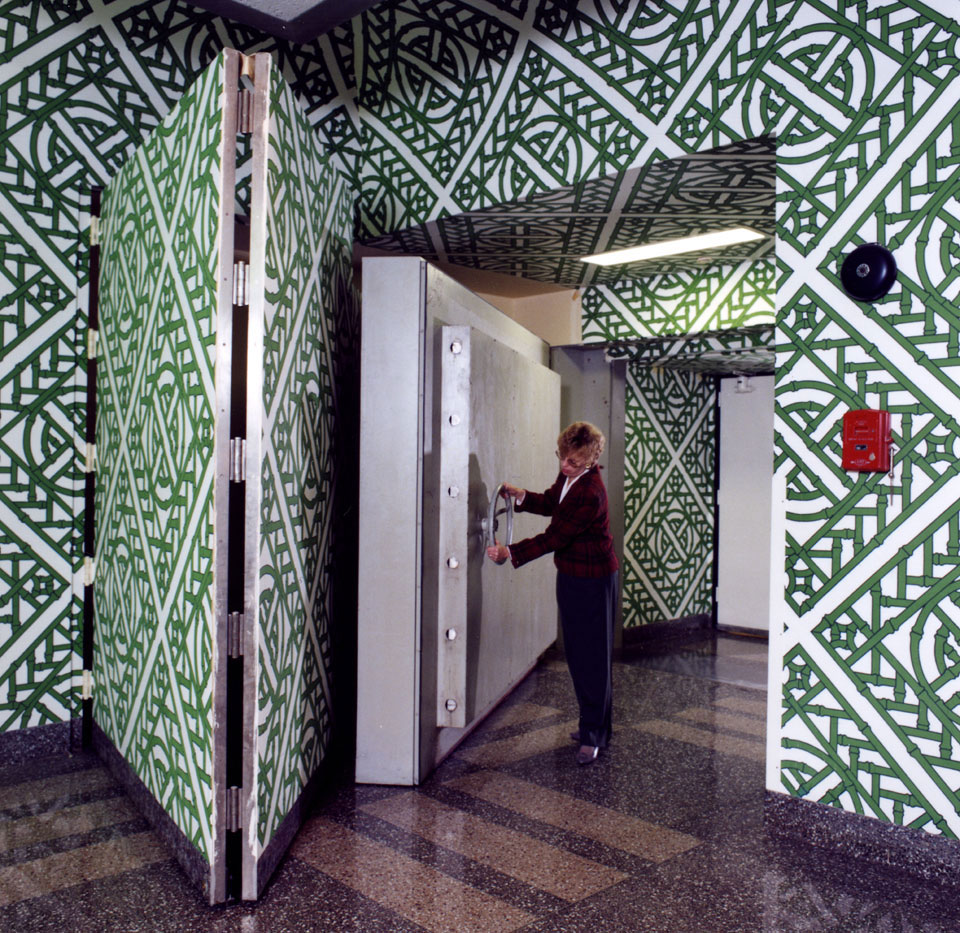
The Project Greek Island bunker was kept as an active facility for 30 years and was capable of housing all members of Congress and then some. PHOTOGRAPHY BY THE GREENBRIER.
3. Project Greek Island
White Sulphur Springs, West Virginia
More than 700 feet into the West Virginia hillside, this Cold War era bunker was active for 30 years, ready and waiting to house Congress in the event of an attack on the nation’s capital. The more than 110,000-square-foot, 150-room facility could meet the needs of 1,100 people, including the 535 members of Congress and a similar number of staff people.
Built from 1958 to 1961, “Project Greek Island” had a 25-ton blast door, decontamination chambers, hospital clinic, power plant, and six-month supply of food and pharmaceuticals. It was all hidden below the glamorous Greenbrier resort and hotel, a National Historic Landmark that has been welcoming international guests—including more than two-dozen presidents— since 1778. To disguise the bunker, a new wing of The Greenbrier was added directly above—construction was completed in plain sight. “I think what makes the bunker so fascinating is the contrast between the rather stark facility underground and the opulence of The Greenbrier Hotel aboveground,” says Robert S. Conte, The Greenbrier’s historian. One visitor said they always thought of The Greenbrier as the height of civilization, so it was a “shock to find that there was something there for the end of civilization.”

You can tour the bunker daily from 9:30am to 3:30pm, but call ahead, as times are subject to change. PHOTOGRAPHY BY THE GREENBRIER.
The best way to describe what it felt like back then, Robert says, was told to him by a former inspector of the bunker. “He said it felt like those moments right before you’re about to host a dinner party—when everything is prepared, the table is set, the lighting is perfect, and you are just standing there waiting for the guests to walk in the door,” he says. “And this went on for 30 years.”
The former U.S. Government Relocation Facility, four hours from D.C. by car, was top-secret until 1992, when The Washington Post published a story exposing it. “I remember the first time I went through the bunker it felt a little creepy thinking hundreds of people—important people with serious responsibilities—would be all together in this large box underground while something catastrophic was going on aboveground,” Robert says. “You see the huge blast doors that would protect you but also separate you from the outside world. You see the equipment that would have provided electrical power when none other was available; you see where they stored the food and the kitchen where it would have been prepared. Most of all, you feel in an enclosed space surrounded by huge thick steel-reinforced concrete walls.”
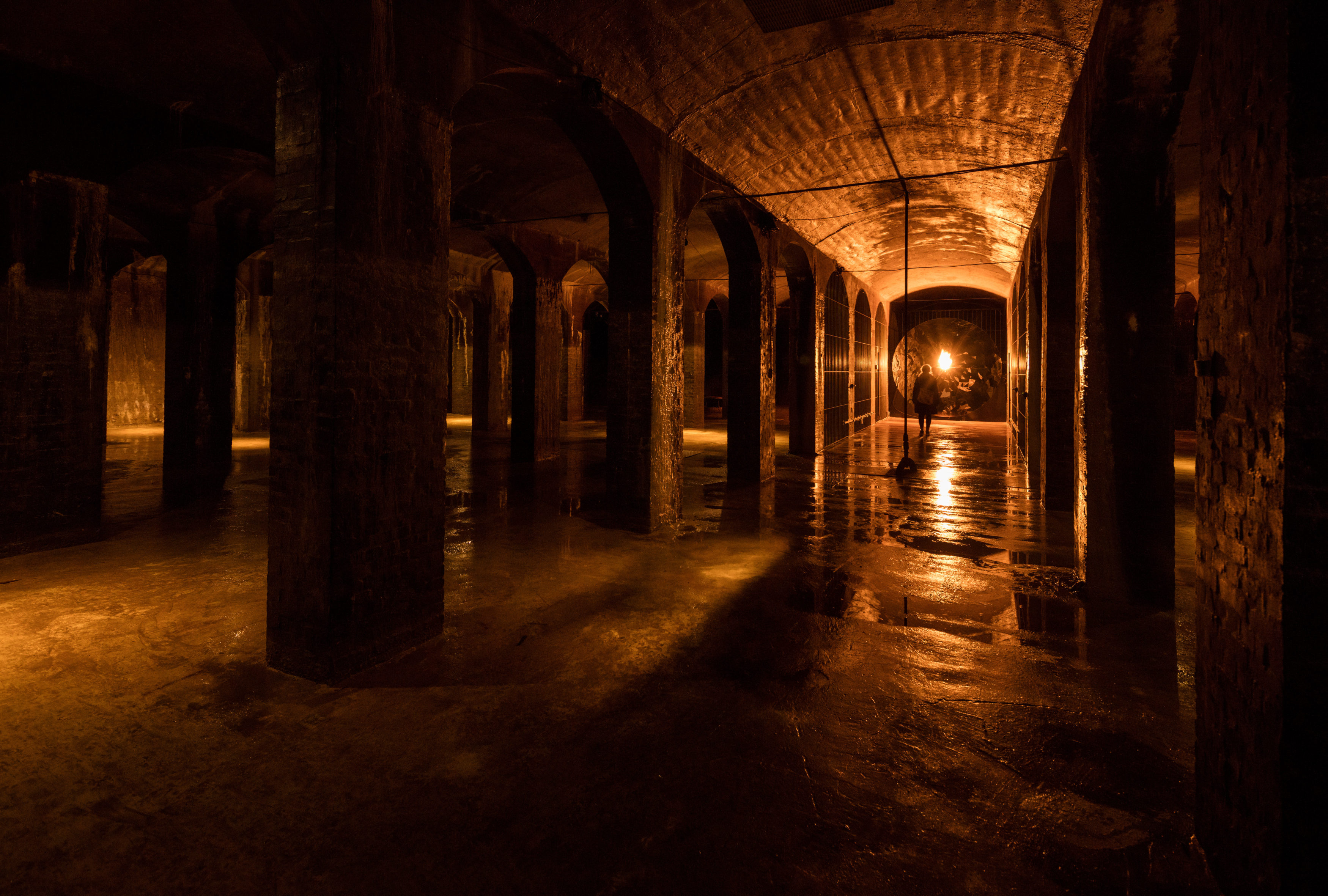
Deeper in Jeppe Hein’s underground exhibit, at The Cisterns, visitors come upon rotating mirrors for a heightened sense of disorientation in the dark. PHOTOGRAPHY BY ANDERS SUNE BERG.
4. The Cisterns
Copenhagen, Denmark
In the heart of Copenhagen tourism, across from an early 18th-century palace and steps from the zoo and countless parks, a surprising landscape is underground. The Cisterns, which date back to their excavation in 1856, once contained the drinking water supply for Denmark’s capital, holding as many as 16 million liters of clean water. By 1933, the cisterns ceased to function as a reservoir for drinking water and were finally drained in 1981. While the water is long gone, the dark cavernous space—essentially a cave beneath the city—now hosts rotating art exhibits and events.
The Cisterns first opened for cultural events in 1996 and had a short life as a modern glass art museum in 2001. In 2013, The Frederiksberg Museums took over the space to transform it into a more atmospheric venue for site-specific art, according to exhibition curator Kristine Frahm. Through November 2018, The Cisterns presented “In is the only way out” by artist Jeppe Hein. Jeppe invites visitors to walk through the labyrinthic colonnades as part of their own inner journey from darkness into light, as they’re confronted with surprises—and disorientation—along the way in the cold, damp, eerily beautiful cisterns.
